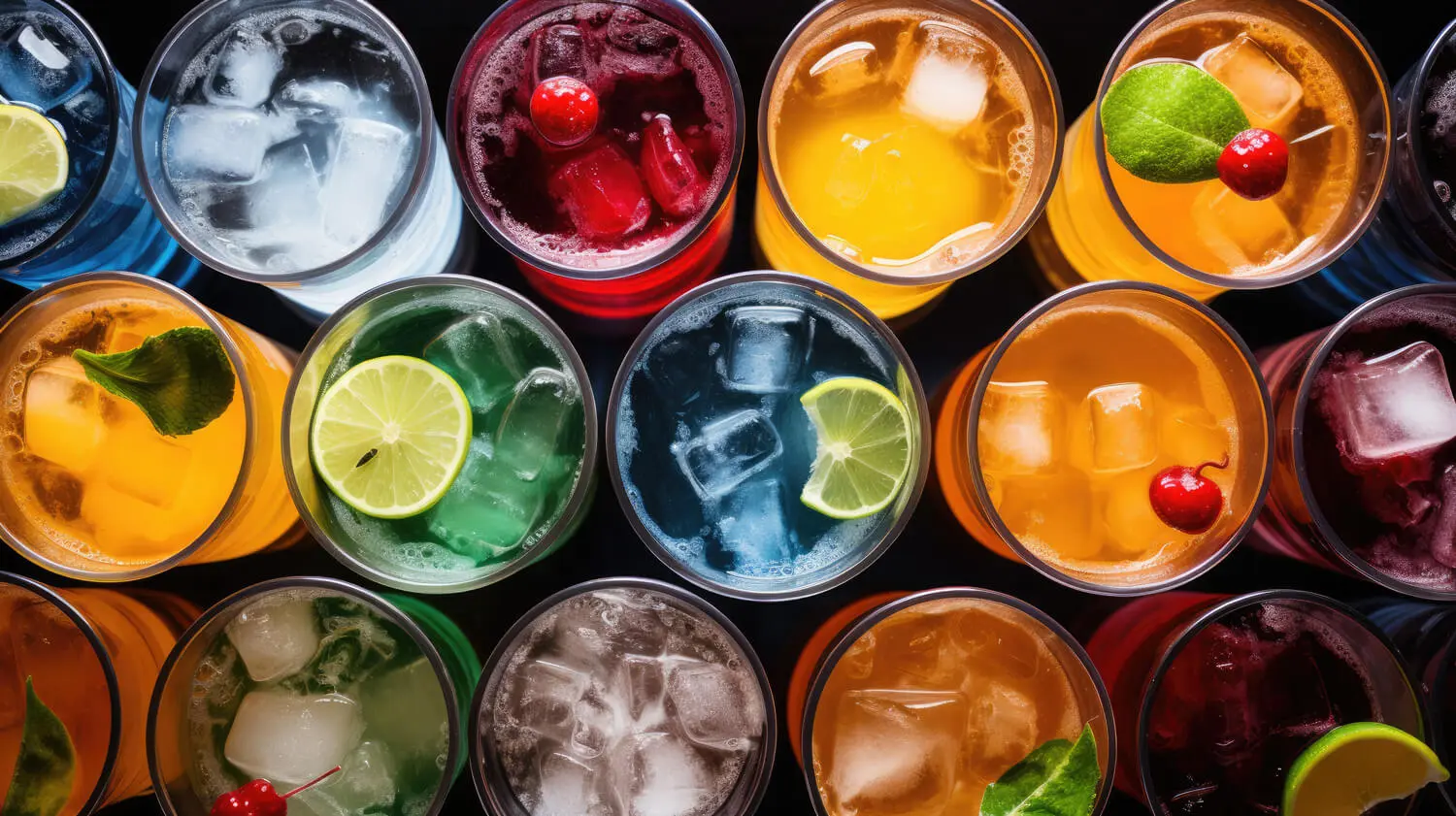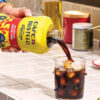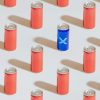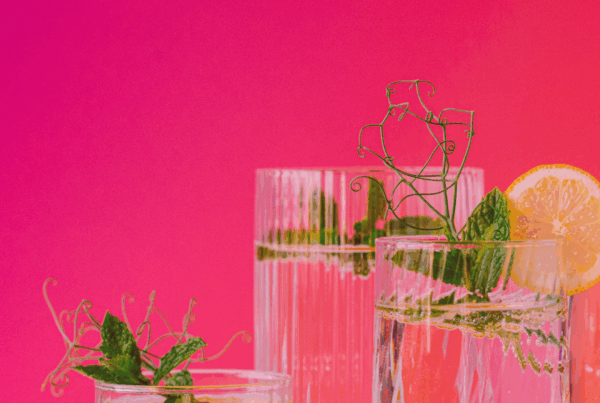Authors: Claire Keys Pytlik with Jesse McMullin and Valerie Jacobs
Walked the water and beverage aisles lately? The category is in an era of explosive growth (and super-saturation), begging the question: what’s a beverage brand to do next?
“It’s totally possible I tried a hundred different beverages that week,” says Valerie Jacobs, Chief Marketing Officer at LPK, reflecting on her recent visit to Anaheim, CA, for Natural Products Expo West. It might be an exaggeration, but her math isn’t impossible: at the week-long trade show for all things new in organic and naturals, nearly 300 brands exhibited in the beverage and water category alone—and that isn’t counting the alcoholic and non-alcoholic adult sectors. Jacobs knows her stuff, having led trends and consumer strategy work for some of LPK’s biggest beverage clients, and can quickly size up new offerings in the crazy-competitive category.
What Are Functional Beverages?
Functional beverages are drinks—be it coffees, teas, milks or fortified waters—that go beyond mere refreshment and hydration, touting specific ingredients and health benefits. In recent years, established CPGs and emergent brands alike have delivered innovations in the functional water and beverage aisles, reflecting consumer desires for products that offer more. “Functional, at its core, means to have a special activity, purpose, or task. Water alone will hydrate you, but functional water gives that one-two punch that people demand,” says Jacobs. “Whether you’re seeking resilience and recovery, mood stability and calm, or a little help with your personal biome, this category must work really hard to meet consumers where they’re at in their daily lives.”
But meeting the moment with consumers is no easy task, explains LPK’s Chief Growth Officer, Jesse McMullin, a multi-hyphenate in functional beverage who previously founded Raw Pharma, leading the development, branding and growth marketing of over 140 on-shelf functional food & beverage CPG products in his 12-year run. McMullin is well-versed in the sector’s complexities from seed to shelf: “This category is as competitive as it gets. Brands must stay current on what’s changing, but also get clear on the differences between enhanced water and functional beverage: the first is high velocity, low margin. The second is medium velocity, high margin. The requirements are different and the rewards are different.”
The Growth of the Functional Beverage Market
Whether it’s protein in your coffee, microbiome support in your smoothie or a mood-boosting energy drink, the sheer volume of functional beverage innovation has led to explosive growth. In 2024, Mordor Intelligence estimates the functional beverage market size at $213 billion, expected to reach $306 billion by 2029 and growing at a CAGR of 7.49%.
It seems this proliferation of choice has led to an ever-higher consumer bar, says Jacobs: “It’s not an accident that this growth is happening now. The pandemic forced all of us to look inward and evaluate our day-to-day routines more closely. It also made us more collectively conscious of our health, and what we can really control.”
McMullin agrees on the timing, tracing functional beverage’s original ascent back to pre-pandemic days: “In late 2019, we were seeing this category take off—but orders and private equity backing stalled out when Covid-19 hit. So many brands were yielding their manufacturing lines to products like hand sanitizer.” McMullin, who launched Rhino Rush Energy and Rush Water, the first cooler-ready carbonated functional beverage, is now helping brands capitalize on post-pandemic demand. “Through 2020 and 2021, soda and snack sales soared, as did alcohol,” he explains. “And it makes sense: we all wanted peace and predictability, so we turned to what’s familiar and comforting. But now, there’s more consumer appetite for new offerings that offer added benefits.”
“We’re seeing stores flex their independence again.”
McMullin sees this on the retailer side as well, observing C-stores and groceries opening up their aisles to make room for new entrants. “We’re seeing stores flex their independence again,” he says, contrasting it to several years of fixed shelf sets, due to complex dynamics amongst suppliers, distributors and store owners.
What’s filling those shelves now? While energy and sports drinks remain in the top spot, functional beverages and enhanced waters have significantly widened their aperture, delivering on a wide array of mental, physical and spiritual needs, including:
- Cleansing and detox
- Bone and joint health
- Weight management
- Physical fitness and sports performance
- Immunity support
- Digestion and microbiome health
- Energy support
- Sleep enhancement
- Mood regulation and stress reduction
- Menopause support
- Hydration
What’s Driving Demand?
The “benefit-stacking” these beverages offer is a welcome reply to emerging consumer desires for foods and beverages that multitask. Says Jacobs: “Consumers are now seeking both physical and mental benefits in their beverages. You must earn your place in their cabinets, on their desks and in their Stanleys. Hydration is still consumers’ number-one priority, but let’s be real: they’re time-strapped and increasingly health conscious.”
“You must earn your place in their cabinets, on their desks and in their Stanleys.”
The consumer sensitivity to well-being is overall more acute, too: “From Gen X to Gen Alpha, consumers are watching their parents age and are determined to live longer and healthier,” she says. “They’ve watched sugar, alcohol and processed foods wreak havoc on the body and are seeking healthy alternatives, whether that’s whole foods or functional beverages.”
The Biggest Trends in Functional Beverage Brands
They say “food is thy medicine,” but in 2024, it’s really beverages doing the healing. The Food Institute found that 84% of consumers now think mental health and focus are “just as important as physical well-being,” believing functional beverages can help support both, and drive better health outcomes. “We’ve moved from a culture that was dieting and sacrificing to one more oriented toward enhancing and enriching,” Jacobs explains. “We’re collectively seeking more from the foods and drinks we choose to consume.”
Performance across beverage verticals reflects this shift. While soda is projected to grow at a rate of approximately 8% and low-sugar/diet drinks at 12 – 17%, functional beverage soars at approximately 200%, according to a recent report by SPINS. Some of the key innovation trends driving the rise include:
- Plant-Based + Organic: natural ingredients have become category table stakes, but herbal infusions, adaptogens (think mushrooms) and superfoods continue to dominate.
- Vegan Protein: peas, hemp, soy, pumpkin seeds, sunflower seeds: the roster of vegan sources packing protein is varied and versatile, boosting everything from coffees and teas to shakes and smoothies.
- Mind + Mood-Boosting: in these stressful times, consumers are increasingly drawn to drinks with ingredients like L-theanine (found in green tea), CBD, THC and adaptogens (such as ashwagandha). These aim to enhance focus, reduce stress and promote mental clarity and calm.
Jacobs says consumers are generally savvier and more educated about functional ingredients and their benefits, but many of the top innovation trends point to the “medi-retail” phenomenon, in which formulations originate for a specific dietary need, then go mainstream: “With healthcare systems overburdened, some consumers feel they can treat themselves through the foods and beverages they consume. These niche ‘dietary’ products often grow as other consumers enjoy their benefits. Take beverages formulated for diabetic concerns: the zero/low-sugar proposition is seen as attractive to a larger population that’s generally concerned about their sugar intake.” Consumers are also gravitating to these drinks’ “inside-out” benefits (glowing skin, shiny hair, strong nails), which is beginning to blur lines with the beauty and skincare categories. “This is a huge white space for growth,” says Jacobs.
What’s Next for Functional Beverages?
As a futurist, Jacobs is already looking ahead to the next big trends in functional beverage. “We’re seeing a lot of conversation around collagen and colostrum-infused drinks,” she says, hinting to new innovations in disease prevention and gut health support. “We know concerns around blood glucose are rising too, which will drive a spike in vinegar-based formulations from brands.” The GLP-1 phenomenon is driving heightened consumer interest in gut biome and low-glycemic foods as well, Jacobs says: “It’s undeniable that the Ozempic craze is making its mark on the wellness category, and that opens up even more growth avenues in the beverage space.”
There’s also excitement for singular ingredients we’ll see more of on beverage shelves: super mushrooms for stress prevention and relief, magnesium for mood, sleep and bone health, beetroot for cardio health, and bee propolis for immune support.
Soon, Jacobs foresees formulations becoming truly custom, thanks to cloud-sourced consumer insights and generative AI capabilities: “Envision a world where AI-driven precision produces a functional beverage tailored to your needs. This is where social data meets scientific data. It’s a really exciting notion for anyone in this industry.”
“Very clearly connect your beverage benefit to your consumer’s problems and desires.”
Understanding the Category Ecosystem
Does the world really need another functional beverage? LPK’s experts reassure brand-builders and CPG marketers it’s a yes, but caution that the stakes are extraordinarily high. “There’s big opportunity here,” Jacobs reflects. “But you need to very clearly connect your beverage benefit to your consumer’s problems and desires.”
“Maintaining a competitive advantage lies in being self-aware about your brand and your business dependencies.”
McMullin agrees, reminding brands that they need to be both consumer-centric and customer-centric to find success. “In a category as crowded and volatile as functional beverage, you’ll quickly see that the competitive forces are extraordinarily intense,” McMullin explains. “The key to understanding these forces—and to maintaining a competitive advantage—lies in being self-aware about your brand and your business dependencies.”
He encourages businesses to consider the broader picture when creating their strategies: “Think about yourself as part of an ecosystem: your brand is working in concert with suppliers, manufacturers, distributors and retailers—all of whom have different interests. And that’s all before your product even makes it in front of a consumer who’s shopping.”
“Remember you have no less than three audiences: the consumer, the retailer and the wholesaler.”
How CPG Brands Can Win
For functional beverage brands looking to succeed, LPK’s experts say focus on these strategies:
- Pick a lane. As consumers toggle between their needs for short-term and long-term health benefits, commit to a leading functional benefit and deliver on that need better than your competitors. Using your brand and product as a vehicle to storytell and educate is key here. “Your demo and education strategy are make-or-break in this category,” says McMullin.
- Nail the taste. One of the biggest challenges for functional beverage brands is delivering on benefits without sacrificing flavor—and veering away from the sugars and additives that did the masking for so long. “Energy drinks aren’t necessarily new, but the flavor profiles at trade shows like Expo West made them feel new,” Jacobs says, citing pairings like chili-mango and green tea-cardamom. “There’s always room for something novel.”
- Nurture your ecosystem. “My best advice for beverage brands? Remember you have no less than three audiences: the consumer, the retailer and the wholesaler,” says McMullin. “Create a service blueprint that captures the wants and needs of each—they’ll all be different. What makes them happy? What solves their problems? Suddenly you have a clearer guide to success.”
- Stand out in the hunt. “People love to discover a highly effective product, and if the brand aligns to their personal values while also providing efficacy, they’ll buy you and tell all their friends,” says Jacobs. But standing out requires discipline: build your brand with strategic purpose, deploy it with consistency and guard it with creative rigor.
- Keep asking what next? Whether you’re an established brand or a new entrant, stay curious and current with the fast-moving category. “A great idea is step one,” says McMullin. “But how will you get it made? How does it fit into your portfolio? How will you market it across your channels? What’s your pitch to stores versus wholesalers? Find a partner to help you answer these questions—and to ask more that you haven’t thought of yet.”
Want more guidance on the future of beverage and how to position your brand for success? Reach out to us here.







